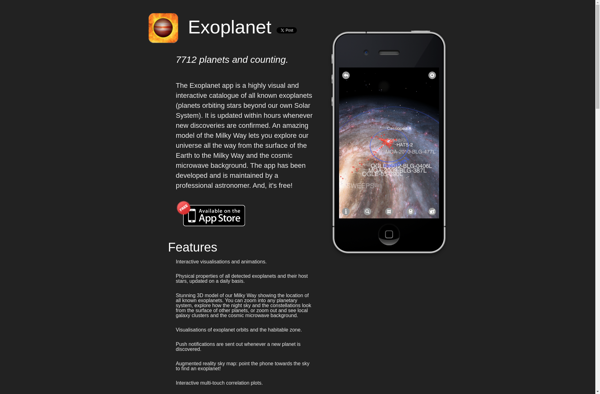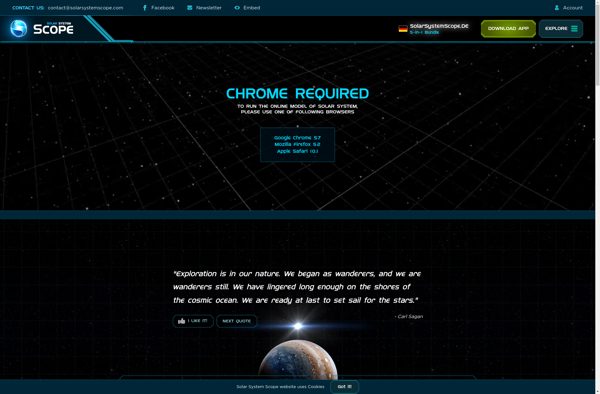Exoplanet

Exoplanet: Open-Source Exoplanet Detection & Analysis
An open-source Python package for exoplanet detection, characterization, and analysis, providing tools for fitting transit and radial velocity data.
What is Exoplanet?
Exoplanet is an open-source Python package for detecting, characterizing, and analyzing exoplanets from astronomical time series data. It was developed by the exoplanet research group at Caltech and includes a suite of tools for fitting exoplanet transit and radial velocity data to infer planetary and orbital parameters.
Key features of Exoplanet include:
- High-performance methods for fitting exoplanet transit and radial velocity models
- Modular, object-oriented design allowing easy extension and customization
- Built-in models for transit photometry, radial velocities, transit timing variations, and more
- Support for multiple datasets, multi-planet systems, stellar variability, and other complications
- Robust error analysis and model comparison via nested sampling, MCMC, or optimal estimators
- Publication-ready tables and plots
- Integration with open source data analysis tools like NumPy, SciPy, Matplotlib, and Pandas
Exoplanet aims to provide high-quality exoplanet modeling tools to support the analysis and interpretation of data from space telescopes like TESS, CHEOPS, JWST, and future missions. It enables standard analyses while also allowing advanced users significant control over fitting and modeling assumptions.
Exoplanet Features
Features
- Modeling of exoplanet transits and radial velocities
- Statistical modeling tools for exoplanet detection
- Tools for exoplanet characterization
- Open-source Python package
Pricing
- Open Source
Pros
Cons
Official Links
Reviews & Ratings
Login to ReviewThe Best Exoplanet Alternatives
Top Science & Education and Astronomy and other similar apps like Exoplanet
Here are some alternatives to Exoplanet:
Suggest an alternative ❐Space Engine

Stellarium

Celestia

Noctua Stellarium Mobile

Solar System Scope

Planetario

Exo planets Explorer 3D

Space Simulator

Mitaka

Gaia Sky

Solar Model
